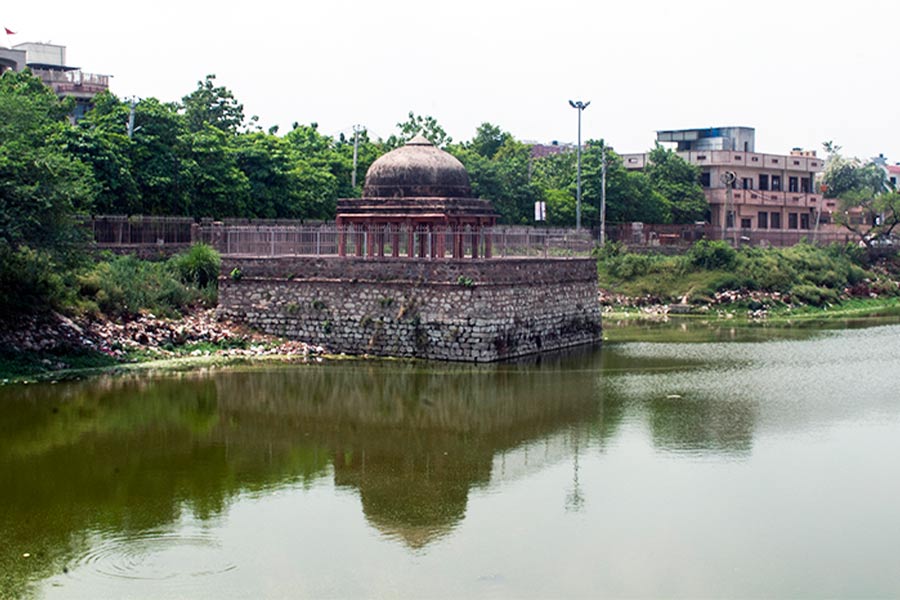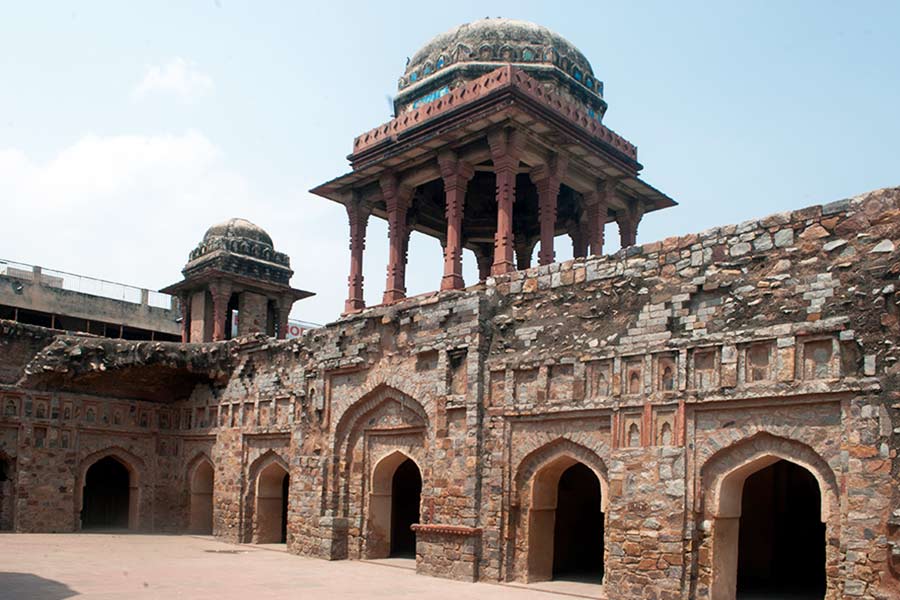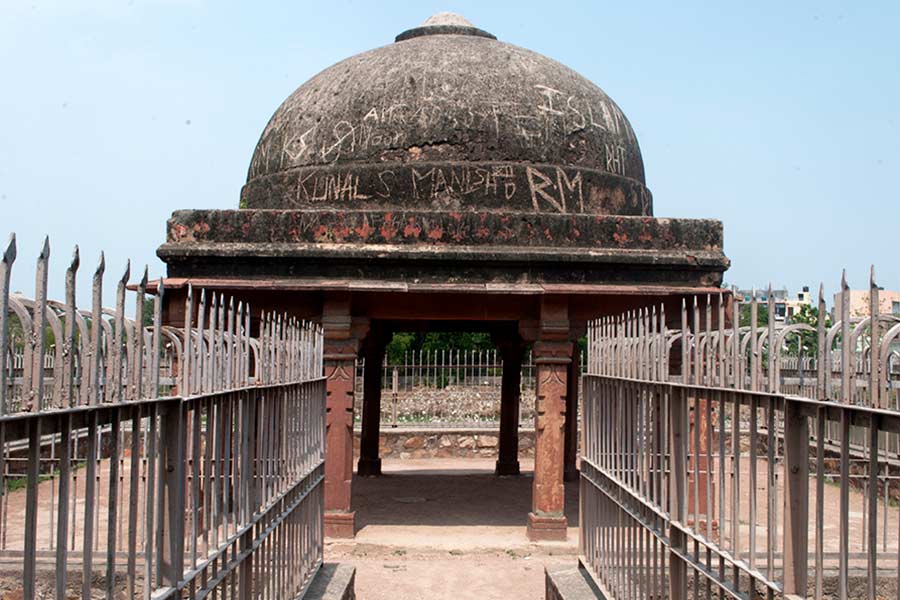Ship-like buildings have fascinated mankind for centuries. From Salt Lake to Elgin Road, our very own City of Joy has its share of jahaj baris. But, when it comes to medieval India, the ship-like palace that stands out is located at Mandu, Madhya Pradesh, in the heart of India. Delhi, too, has a ship-like palace embedded deep inside the labyrinth of the south Delhi neighbourhood of Mehrauli.
The author and historian William Dalrymple mentions in his book, The Last Mughal: “…. of the great cities of the world, only Rome, Istanbul and Cairo can even begin to rival Delhi for the sheer volume and density of historic remains.” And it well may be that the Mehrauli area has the largest concentration of monuments in the whole of Delhi. The area is home to the famed Qutub complex, and next to it stands the Mehrauli Archaeological Park. Apart from the two, the entire south Delhi neighborhood is dotted with medieval ruins ranging from dargas to palaces and from mosques to tombs. Among this, stands the ship-like palace of Jahaz Mahal, next to a huge sultanate-period water body.

The Jahaz Mahal is located next to a large lake called Hauz-i-Shamsi
The water body and the palace are located deep inside Mehrauli. A visit to these places can be paired with a visit to the nearby Dargah of Qutbuddin Bakhtiyar Kaki. The two historical places are connected by a narrow road winding through the chaotic neighborhood.
The Jahaz Mahal is located next to a large lake called Hauz-i-Shamsi, which was dug out by Sultan Iltutmish in 1230. Jahaz Mahal was constructed almost 200 years later — during the Lodi Period — and because of its reflection on the huge lake, it gets a ship-like appearance and hence the name.
Historians have doubts about the exact use of the Jahaz Mahal. Some believe it to be a sarai (inn) for pilgrims, while others opine it was a pleasure house of the royal family. The presence of a mihrab on the western wall of Jahaz Mahal indicates that one part of the building was indeed a mosque.

Interiors of the palace
The Jahaz Mahal was once surrounded by a moat and three sides of the moat stand to this day. The moat was crossed by a wooden draw-bridge. The movable wooden plank — complete with a pulley system — has long gone, but the flight of stairs leading to the plank has survived and can be seen on the southern end of the palace. Today, the filled-up eastern side of the moat provides access to the interiors of Jahaz Mahal. The western side housed the mosque — complete with decorative mihrab — along with ante-chambers topped with domes.

The four corners house four small chhatris, out of which, the one at the south-west corner has toppled
The roof has long collapsed, but five of the six chhatris have survived the test of time and stands to this day. The blue-tile decorated chhatris are the prime attraction of Jahaz Mahal. The four corners house four small chhatris, out of which, the one at the south-west corner has toppled. The one on the middle of the western wall is octagonal in shape. The middle of the eastern wall houses the grandest chhatri. The square chhatri is supported by 12 pillars and has elaborate blue tile decoration, which can be seen to this day.

The grandest chhatri is supported by 12 pillars and has elaborate blue tile decoration
To the west of the Jahaz Mahal lies a large water body, which predates the Jahaz Mahal by two centuries and as an interesting story. Known as Hauz-i-Shamsi, it is believed that the Prophet arrived in Iltutmish’s dream and mentioned the site of the tank. The next day, Iltutmish visited the place and found the hoof marks of the Prophet’s horse. Iltutmish had the tank dug and in the centre of the tank, he made a pavilion housing the stone slab with the hoof marks of the Prophet’s horse.

Pathway leading to the pavilion of Hauz-i- Shamsi
Today, a pavilion can be seen on the western edge of the tank. A group of historians do believe it was the original pavilion and since the lake has shrunk over the years, it’s position has changed from the centre to the western edge. But, others differ and suggest that the original pavilion no longer exists and the one we see today was constructed at a later date.
The Moorish traveller Ibn Battuta was struck by the vastness of the tank during his visit during the Tughlaq period. But, sadly, the vastness has long gone. Not only has the tank shrunk, but the ever-expanding city has encroached into the two medieval sites and buildings have come up barely inches from the famed Jahaz Mahal.
Travel Information
Timings: Open from 9am to 5pm daily
Tickets: No, entry free
Photography: Allowed
Festivities: Phool Walon ki Sair is celebrated in the month of August. The festival has its origin in the 18th century and started from a conflict between the Mughals and British
